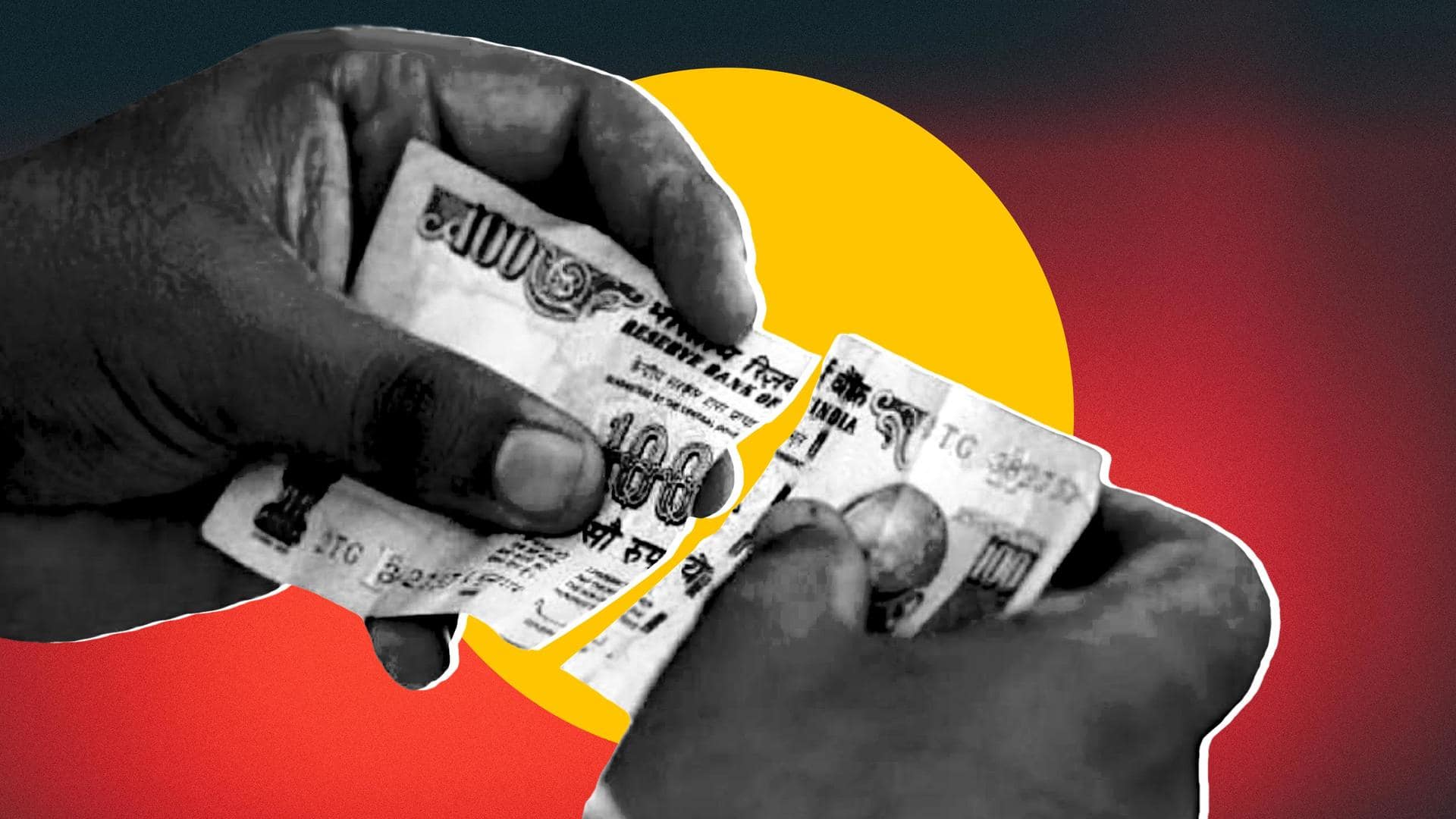
Here's how you can exchange torn or damaged currency notes
What's the story
Your mutilated banknotes are still exchangeable! When you exchange or store your currency notes for a long time, they are likely to get soiled, post which many believe that they no longer hold any value. Rejoice, as this is not the case! The Reserve Bank Of India (RBI) has some special guidelines that allow you to exchange damaged notes without any hassle.
RBI's rule
What does the RBI say about damaged currency bills?
As per the rules set by the RBI, no bank in the country can refuse to accept damaged notes, provided that they shouldn't be fake currency. If a bank declines to accept these notes, a person has the right to file a complaint against the bank in question with the RBI. The authority shall look into the matter and take action.
Guidelines
The RBI's guidelines about exchanging currency bills
According to the RBI's guidelines, only a mutilated, defective/imperfect, soiled banknote that is slightly cut, stained, or features a missing essential portion, and currency notes of Rs. 10 and higher in two pieces can be exchanged with banks. Any public/private bank or RBI issue office can exchange such notes without requiring one to fill out a form for the same.
Meaning
Let's understand what mutilated, imperfect, and soiled currency notes are
Mutilated currency notes are those with a portion missing or which have more than two pieces. Imperfect banknotes, on the other hand, are those that are partially or wholly washed, obliterated, altered, shrunk, or indecipherable. Finally, soiled notes are those that get stained because of overuse. They may decolor, feature holes, ink, or oil, and experience normal wear and tear.
Process
Process: Here's how you can exchange such notes with banks
To deposit or exchange such notes, you have to visit the regional office of the RBI. Deposit them with all the required information (your name, address, bank account number, and denominations of the notes deposited) into a box named 'Triple Lock Receptacle' (TLR). Ensure that you are depositing the notes and the information in a closed cover.
Condition
Conditions for exchanging damaged currency notes
The worse the note is, the lesser will be its exchange value. Notes that are burnt, disfigured, charred, or inseparably pieced together can't be exchanged. You may have to pay a transaction fee if you deposit more than 20 damaged notes and their total is more than Rs 5,000. The security number of damaged notes must be visible for undergoing exchange.
Further conditions
Exchange: Full or partial amount in return?
The amount you may receive in exchange for a damaged note largely depends on its face value/denomination and undamaged features. For instance, you submit a mutilated Rs. 100 note for exchange. Factually, the note has an area of 93.72 sq cm, so the minimum area required to receive full payment is 75 sq cm, and the half-value payment is 38 sq cm.
Denominations
Exchange values of damaged Rs. 10 and Rs. 50 notes
The new Rs. 10 note has an area of 77.49 sq cm. You get its full value back if it is unaffected till 39 sq cm. The new Rs. 50 note measures 89.10 sq cm. You get full payment when 72 sq cm of it is clear, else partial if 36 sq cm is unaffected. You earn nothing if they fall below partial levels.
Denominations 2
Exchange values of damaged Rs. 20 and Rs. 200 notes
For the Rs. 20 note, you get the full amount in return if you have at least 50% of the surface area of the note undamaged. The Rs. 200 note has an area of 96.36 sq cm. The minimum area required to get the full and partial payment back is 78 sq cm and 39 sq cm respectively.
Denominations 3
Exchange values of damaged Rs. 500 and Rs. 2,000 notes
Rs. 500 has an area of 99 sq cm. The minimum area required to get the full payment return is 80 sq cm whereas it is 40 sq cm to get the partial amount. For Rs. 2,000, its area measures 109.56 sq cm. You get the full amount back if the minimum unaffected area is 88 sq cm and partial at 44 sq cm.